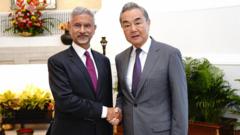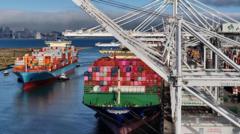Apple's recent projections indicate a nearly $900 million increase in costs tied to U.S. tariffs, prompting a strategic pivot in manufacturing.
**Apple Faces $900 Million Cost Increase Due to Trump Tariffs**

**Apple Faces $900 Million Cost Increase Due to Trump Tariffs**
Tech giant expects significant financial impact as it navigates shifting production lines.
Apple has announced that it will face a nearly $900 million hit this quarter as a result of tariffs on imported goods, despite certain exemptions under President Donald Trump's administration. In response to the disruptions caused by the tariff policies, Apple plans to shift production of iPhones headed for the U.S. away from China, which is subject to the highest tariffs.
The company reported a 5% revenue increase year-on-year for the first three months of the year, totaling $95.4 billion. Similar resilience was noted by Amazon, which recorded an 8% rise in its North American e-commerce sector. Amazon's CEO, Andy Jassy, expressed cautious optimism about weathering the current economic uncertainty.
Despite the tariff-related turmoil, Apple remains committed to maintaining a strong domestic investment profile, with plans to invest $500 billion across various U.S. states in the upcoming four years. However, in a strategic shift, Apple indicated the majority of iPhones sold in the U.S. would be manufactured in India moving forward. Tim Cook, Apple's CEO, outlined that by the end of June, most iPhones intended for the American market will have India as their origin, alongside plans for additional products like iPads and Macs to be produced in Vietnam.
Industry analysts note that Apple’s transition from a predominantly China-based production model to favoring India and Vietnam marks a significant transformation. Patrick Moorhead, CEO of Moor Insights & Strategy, remarked on the company's noteworthy progress, which contradicts Cook's previous assertions about production capabilities in China.
Meanwhile, Amazon is adapting to the tariffs by ensuring a diverse range of sellers, leading to a 9% increase in total sales to $155.7 billion in the first three months of 2025. Executives have observed an uptick in stockpiling by consumers, suggesting that despite tariff impacts, businesses like Amazon might benefit from changing consumer behaviors amid economic disruption. As both companies navigate these challenges, they are poised for potential growth through strategic adjustments and operational resilience.




















